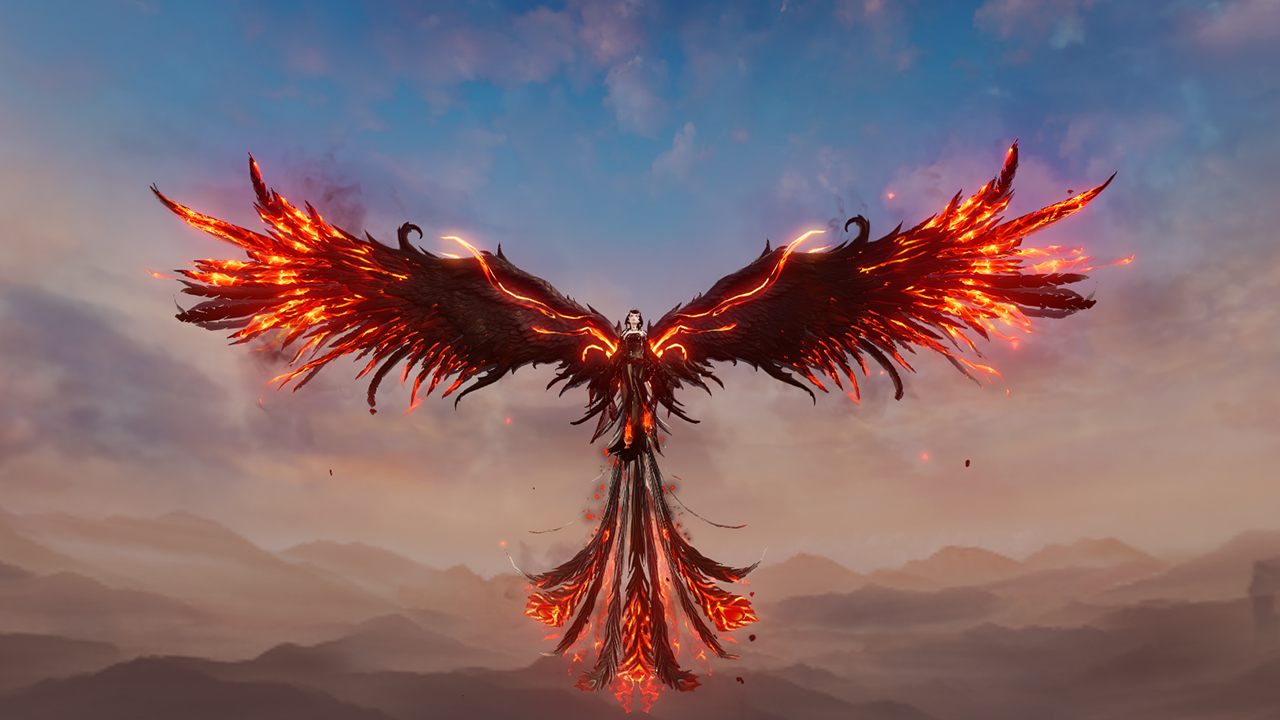Summary of the Book of Revelation
This summary of the book of Revelation provides information about the title, author(s), date of writing, chronology, theme, theology, outline, a brief overview, and the chapters of the Book of Revelation.
Summary of the Book of Revelation. This summary of the book of Revelation provides information about the title, author(s), date of writing, chronology, theme, theology, outline, a brief overview, and the chapters of the Book of Revelation. Four times the author identifies himself as John (1:1,4,9; 22:8). Revelation 3:20. I stand at the door and knock. If you hear my voice and open the door, I will come in, and we will share a meal together as friends. This is the holy book of Revelation, known as 'The Revelation of St. John the Divine', although the God-given title is at the very beginning of the text, 'Th.
Author
- Revelation Online. 96,024 likes 25 talking about this. Soar through the skies of Nuanor in this free-to-play fantasy MMORPG!
- Prologue (Daniel 12:1–13)1 This is the revelation of Jesus Christ, which God gave Him to show His servants what must soon a come to pass. He made it known by sending His angel to His servant John, 2 who testifies to everything he saw. This is the word of God and the testimony of Jesus Christ. 3 Blessed is the one who reads aloud the words of this prophecy, and blessed are those who hear.
Four times the author identifies himself as John (1:1,4,9; 22:8). From as early as Justin Martyr in the second century a.d. it has been held that this John was the apostle, the son of Zebedee (see Mt 10:2). The book itself reveals that the author was a Jew, well versed in Scripture, a church leader who was well known to the seven churches of Asia Minor, and a deeply religious person fully convinced that the Christian faith would soon triumph over the demonic forces at work in the world.
In the third century, however, an African bishop named Dionysius compared the language, style and thought of the Apocalypse (Revelation) with that of the other writings of John and decided that the book could not have been written by the apostle John. He suggested that the author was a certain John the Presbyter, whose name appears elsewhere in ancient writings. Although many today follow Dionysius in his view of authorship, the external evidence seems overwhelmingly supportive of the traditional view.

Date
Revelation was written when Christians were entering a time of persecution. The two periods most often mentioned are the latter part of Nero's reign (a.d. 54-68) and the latter part of Domitian's reign (81-96). Most interpreters date the book c. 95. (A few suggest a date during the reign of Vespasian: 69-79.)
Occasion


Since Roman authorities at this time were beginning to enforce emperor worship, Christians -- who held that Christ, not Caesar, was Lord -- were facing increasing hostility. The believers at Smyrna are warned against coming opposition (2:10), and the church at Philadelphia is told of an hour of trial coming on the world (3:10). Antipas has already given his life (2:13) along with others (6:9). John has been exiled to the island of Patmos (probably the site of a Roman penal colony) for his activities as a Christian missionary (1:9). Some within the church are advocating a policy of compromise (2:14-15,20), which has to be corrected before its subtle influence can undermine the determination of believers to stand fast in the perilous days that lie ahead.
Purpose
John writes to encourage the faithful to resist staunchly the demands of emperor worship. He informs his readers that the final showdown between God and Satan is imminent. Satan will increase his persecution of believers, but they must stand fast, even to death. They are sealed against any spiritual harm and will soon be vindicated when Christ returns, when the wicked are forever destroyed, and when God's people enter an eternity of glory and blessedness.
Literary Form
For an adequate understanding of Revelation, the reader must recognize that it is a distinct kind of literature. Revelation is apocalyptic, a kind of writing that is highly symbolic. Although its visions often seem bizarre to the Western reader, fortunately the book provides a number of clues for its own interpretation (e.g., stars are angels, lampstands are churches, 1:20; 'the great prostitute,' 17:1, is 'Babylon' [Rome?], 17:5,18; and the heavenly Jerusalem is the wife of the Lamb, 21:9-10).
Distinctive Feature
A distinctive feature is the frequent use of the number seven (52 times). There are seven beatitudes (see note on 1:3), seven churches (1:4,11), seven spirits (1:4), seven golden lampstands (1:12), seven stars (1:16), seven seals (5:1), seven horns and seven eyes (5:6), seven trumpets (8:2), seven thunders (10:3), seven signs (12:1,3; 13:13-14; 15:1; 16:14; 19:20), seven crowns (12:3), seven plagues (15:6), seven golden bowls (15:7), seven hills (17:9) and seven kings (17:10), as well as other sevens. Symbolically, the number seven stands for completeness.
Interpretation
Interpreters of Revelation normally fall into four groups:
- Preterists understand the book exclusively in terms of its first-century setting, claiming that most of its events have already taken place.
- Historicists take it as describing the long chain of events from Patmos to the end of history.
- Futurists place the book primarily in the end times.
- Idealists view it as symbolic pictures of such timeless truths as the victory of good over evil.
Fortunately, the fundamental truths of Revelation do not depend on adopting a particular point of view. They are available to anyone who will read the book for its overall message and resist the temptation to become overly enamored with the details.
Outline
- Introduction (1:1-8)
- Prologue (1:1-3)
- Greetings and Doxology (1:4-8)
- Jesus among the Seven Churches (1:9-20)
- The Letters to the Seven Churches (chs. 2 - 3)
- Ephesus (2:1-7)
- Smyrna (2:8-11)
- Pergamum (2:12-17)
- Thyatira (2:18-29)
- Sardis (3:1-6)
- Philadelphia (3:7-13)
- Laodicea (3:14-22)
- The Throne, the Scroll and the Lamb (chs. 4-5)
- The Throne in Heaven (ch. 4)
- The Seven-Sealed Scroll (5:1-5)
- The Lamb Slain (5:6-14)
- The Seven Seals (6:1;8:1)
- First Seal: The White Horse (6:1-2)
- Second Seal: The Red Horse (6:3-4)
- Third Seal: The Black Horse (6:5-6)
- Fourth Seal: The Pale Horse (6:7-8)
- Fifth Seal: The Souls under the Altar (6:9-11)
- Sixth Seal: The Great Earthquake (6:12-17)
- The Sealing of the 144,000 (7:1-8)
- The Great Multitude (7:9-17)
- Seventh Seal: Silence in Heaven (8:1)
- The Seven Trumpets (8:2;11:19)
- Introduction (8:2-5)
- First Trumpet: Hail and Fire Mixed with Blood (8:6-7)
- Second Trumpet: A Mountain Thrown into the Sea (8:8-9)
- Third Trumpet: The Star Wormwood (8:10-11)
- Fourth Trumpet: A Third of the Sun, Moon and Stars Struck (8:12-13)
- Fifth Trumpet: The Plague of Locusts (9:1-12)
- Sixth Trumpet: Release of the Four Angels (9:13-21)
- The Angel and the Little Scroll (ch. 10)
- The Two Witnesses (11:1-14)
- Seventh Trumpet: Judgments and Rewards (11:15-19)
- Various Personages and Events (chs. 12-14)
- The Woman and the Dragon (ch. 12)
- The Two Beasts (ch. 13)
- The Lamb and the 144,000 (14:1-5)
- The Harvest of the Earth (14:6-20)
- The Seven Bowls (chs. 15-16)
- Introduction: The Song of Moses and the Seven Angels with the Seven Plagues (ch. 15)
- First Bowl: Ugly and Painful Sores (16:1-2)
- Second Bowl: Sea Turns to Blood (16:3)
- Third Bowl: Rivers and Springs of Water Become Blood (16:4-7)
- Fourth Bowl: Sun Scorches People with Fire (16:8-9)
- Fifth Bowl: Darkness (16:10-11)
- Sixth Bowl: Euphrates River Dries Up (16:12-16)
- Seventh Bowl: Tremendous Earthquake (16:17-21)
- Babylon: The Great Prostitute (17:1;19:5)
- Babylon Described (ch. 17)
- The Fall of Babylon (ch. 18)
- Praise for Babylon's Fall (19:1-5)
- Praise for the Wedding of the Lamb (19:6-10)
- The Return of Christ (19:11-21)
- The Thousand Years (20:1-6)
- Satan's Doom (20:7-10)
- Great White Throne Judgment (20:11-15)
- New Heaven, New Earth, New Jerusalem (21:1;22:5)
- Conclusion and Benediction (22:6-21)

From the NIV Study Bible, Introductions to the Books of the Bible, Revelation
Copyright 2002 © Zondervan. All rights reserved. Used with permission.
Light & Bright
Layer in lighting with our vast collection of table lamps, buffet lamps, floor lamps and more.
Room Refresh
Quickly revamp a space with our extensive collection of unique accessories. Discover everything from artisan-made ceramics to artisically designed pillows!
Keep it Clean
Our Padria Mirror Collection uses a clean, thick iron strap to create a sleek and timeless look. Available in multiple shapes and finishes.
Get Inspired
Shop looks curated by YOU. Tag your Instagram photos with #RevelationbyUttermost for a chance to be featured.
Connect with us on Instagram and Facebook.

Revelation Online Wiki
Revelation 3:20
Revelation Online Wiki
Look! I stand at the door and knock. If you hear my voice and open the door, I will come in, and we will share a meal together as friends.
Comments are closed.